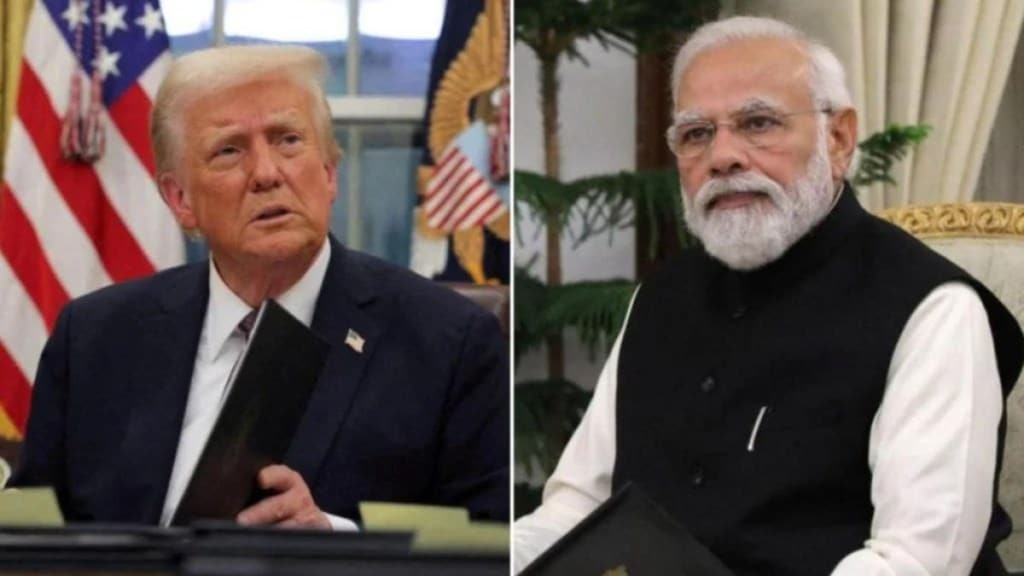By Amitendu Palit
How close are India and the US to cutting a trade deal? Many feel a deal is just round the corner, especially after the latest US sanctions on Russia and the burst of deals signed by President Donald Trump during his visit to Southeast Asia.
India is one of the few countries that are yet to sign a deal with the US, despite negotiations having started much earlier than most. Both countries committed to a “fall 2025” deadline for getting to a deal in a joint statement they issued in February. As time passes, doubts grow regarding the feasibility of the deadline.
The Russian sanctions can be an enabler for the deal. These make it difficult for Indian oil refiners to source crude oil from Russia. The difficulty produces convenient optics for both sides. The US can highlight that the sanctions will force India to stop buying Russian oil in the foreseeable future. India can mention the sanctions as an unavoidable factor, forcing it to search other sources of crude and diversify, again in the foreseeable future. The “foreseeable future” becomes the key factor based on which both the US and India can put aside the obstacle of Russian oil in moving to a deal.
Russian oil is not the only hurdle in getting to a deal. India’s “red lines” on tariff concessions in sensitive areas remain. With the Bihar Assembly elections at the doorstep, any signal that farmer interests are compromised by cutting tariffs can be counterproductive. The US has also put forward tough demands that India might find difficult to comply with. The former has been insisting on wide-scale purchase commitments from all partners it has signed deals with. How far India is willing to oblige on such commitments—buying more American energy, defence, food, agriculture, and mechanical items—is going to be interesting to see.
While India has held its ground for the last few months, it might find the conditions getting tougher with time. This is not just because of the Russian sanctions; there are other factors that are affecting its ability to hold up.
A crucial factor is the tendency of economies across the world, especially in Asia, to fall in line with US demands. After stitching up deals across Southeast Asia, President Trump has secured a comprehensive understanding with Japan. Korea should follow soon. The Trump-Xi meeting at the Asia-Pacific Economic Cooperation (APEC) summit and the prospects of a US-China trade deal will leave India as a last frontier to be conquered by the US.
The “herd” effect of the US wrapping up so many deals is bound to impact prospects for India. Even Brazil, which was almost as badly hit with US tariffs as India, is looking to “settle” matters with the US through a deal. India might soon find itself as an outlier in a pattern where US trade deals have become the defining binary in world trade. If this situation persists, then the US is unlikely to waste any opportunity to further economically coerce India. More innovative ways of “punishing” Indian exports—both goods and services—are likely to come up. Most likely of these are trade-restrictive actions on Indian exports taken by countries that have aligned with the US. China has already pulled up Mexico and Canada for high tariffs on electric vehicles, which it feels are due to US “nudging”. If India gets isolated in resisting to US trade demands, however unjustified these are, then it should be prepared to face such kinds of actions from US nudging.
The US has been successful in getting countries to concede to its demands without a show of strength from the rest of the world, except China. Global middle powers, who were expected to resist the blunt weaponisation of tariffs as a geoeconomic tool, have not been able to come together. This shows how divergent the middle powers—the UK, Japan, Australia, Korea, Indonesia, India, Brazil, and the European Union (EU)—are in agreeing among themselves over resisting unilateral pressures to change the trajectory of global trade.
India really doesn’t have many options other than eventually agreeing to a US trade deal. The short-term effects of US tariffs will soon grow into long-term pains as other countries start recovering their access to the US market. The domestic pressure from affected industries to cut a deal with the US will become heavy over time. So will the persuasion to switch from Russian oil, especially if that is the last hurdle that remains to be crossed.
What India must brace for, though, is what lies ahead after agreeing to a deal. If the deals cut with the EU, UK, and most recently with Japan, are any indication, then the prices for lower reciprocal tariffs are high. These include not just purchasing large amounts of American products but also investing in the US. There’s not much that India has in its favour by way of negotiating leverage to switch the terms in its favour.
If India cuts a deal with the US, it needs to be taken as a bitter pill, not a pinch of salt. The rule of the game for these deals is to give much more than what we get. The US has used its strategic might to pull off major geoeconomic triumphs. India might not be able to persist for long as an honourable exception.
Amitendu Palit is a senior research fellow and research lead (trade and economics) at the Institute of South Asian Studies, National University of Singapore
Disclaimer: Views expressed are personal and do not reflect the official position or policy of FinancialExpress.com. Reproducing this content without permission is prohibited.

